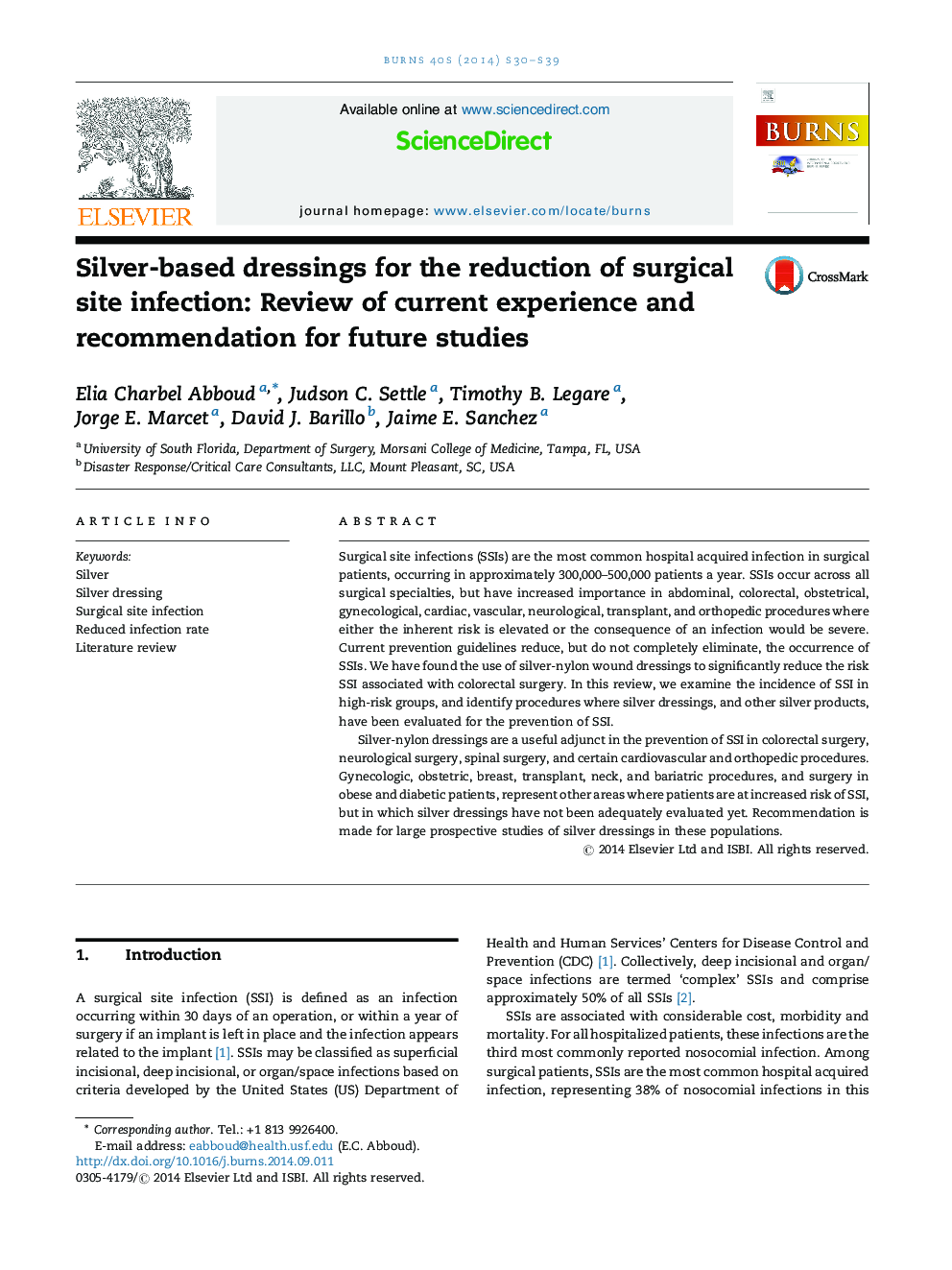| Article ID | Journal | Published Year | Pages | File Type |
|---|---|---|---|---|
| 3104874 | Burns | 2014 | 10 Pages |
Surgical site infections (SSIs) are the most common hospital acquired infection in surgical patients, occurring in approximately 300,000–500,000 patients a year. SSIs occur across all surgical specialties, but have increased importance in abdominal, colorectal, obstetrical, gynecological, cardiac, vascular, neurological, transplant, and orthopedic procedures where either the inherent risk is elevated or the consequence of an infection would be severe. Current prevention guidelines reduce, but do not completely eliminate, the occurrence of SSIs. We have found the use of silver-nylon wound dressings to significantly reduce the risk SSI associated with colorectal surgery. In this review, we examine the incidence of SSI in high-risk groups, and identify procedures where silver dressings, and other silver products, have been evaluated for the prevention of SSI.Silver-nylon dressings are a useful adjunct in the prevention of SSI in colorectal surgery, neurological surgery, spinal surgery, and certain cardiovascular and orthopedic procedures. Gynecologic, obstetric, breast, transplant, neck, and bariatric procedures, and surgery in obese and diabetic patients, represent other areas where patients are at increased risk of SSI, but in which silver dressings have not been adequately evaluated yet. Recommendation is made for large prospective studies of silver dressings in these populations.
